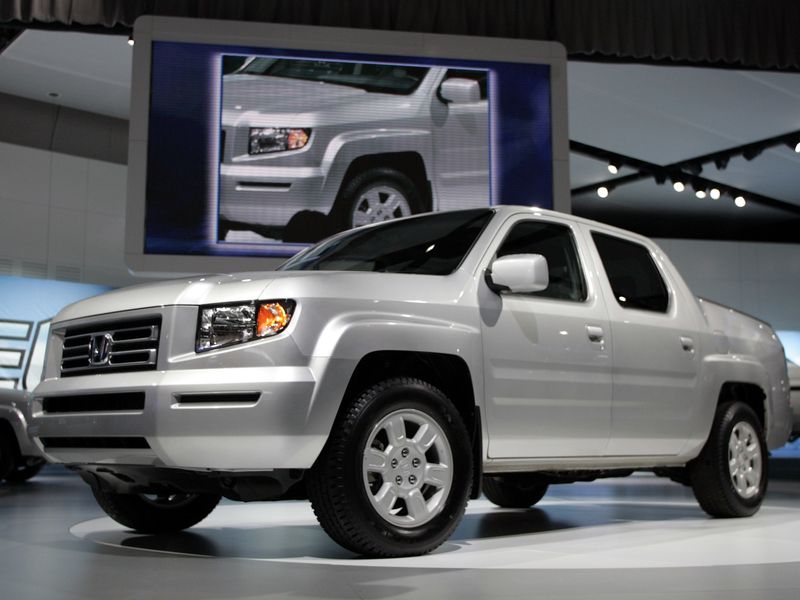
Lights trucks — crossovers, SUVs and pickups — were really the thing to have in the late 1990s and early 2000s.
Honda Motor Co., which gained traction in the 1970s with small cars, had steadily expanded its lineup with crossovers and minivans.
A traditional pickup was the only major hole in the brand’s lineup.
Yet for years, pickups had been low on Honda’s priority list; they weren’t considered extensions of the family car.
Before seriously thinking about pickups, the company needed a credible minivan, the Odyssey, and then jumped into the fast-growing SUV segment, with the compact Honda CR-V and the larger Honda Pilot and Acura MDX. Then it had to build enough factory space to satisfy demand.
But in 2001, eager to keep Honda buyers from drifting to another brand, development got underway when an engineering team began experimenting with Honda’s first development mule, an extended version of a first-generation Acura MDX crossover. A competitor’s pickup bed was integrated in the rear structure.
After four years of development, the final design was revealed to the public as Honda’s Sport Utility Truck Concept at the 2004 North American International Auto Show. Later in 2004, Honda unveiled a revised version of the pickup concept at the Specialty Equipment Market Association Show and shared the official name of the vehicle — the Ridgeline.
The production version of the Ridgeline was unveiled the following year on Jan. 10 at the 2005 North American International Auto Show in Detroit.
The five-passenger, four-wheel-drive Ridgeline came in three trim levels: RT, RTS and RTL. It was powered by a 3.5-liter V-6 engine with 255 hp. That was more horsepower than the two leading small pickups — the Chevrolet Colorado and Toyota Tacoma.
Honda says the first-generation Ridgeline was a uniquely engineered vehicle with only 7 percent of components shared with other Honda vehicles. The powertrain was borrowed from the first-generation MDX but was “extensively calibrated and strengthened” for heavier hauling and towing duties, Honda said.
The Ridgeline was first built in Alliston, Ontario, and U.S. sales began in March 2005. Less than a year later, the pickup was named 2006 North American Truck of the Year at the North American International Auto Show, beating the other finalists, the Nissan Xterra and Ford Explorer.
The New York Times said the Ridgeline “turned the old pickup stereotype — Confederate flag on the antenna, gun rack in the back window — on its head.”
Autoweek called it “somewhat ungainly.”
When the Ridgeline emerged as winner of Car and Driver’s five-vehicle comparison test in June 2005, the magazine was bombarded with letters of outrage. Readers decried: “This thing you weirdos call a truck is not a truck at all but some sort of car decked out in pickup drag and therefore an insult to all true truckers.”
Later, after two years and 40,000 miles with a Ridgeline, the magazine heartily endorsed its original finding: “Let’s appreciate the Ridgeline for what it is: a new type of utility vehicle.”
Output of the first-generation Ridgeline ended in early 2015.
After a one-year hiatus, the second-generation Ridgeline went on sale in June 2016 as a 2017 model-year vehicle.